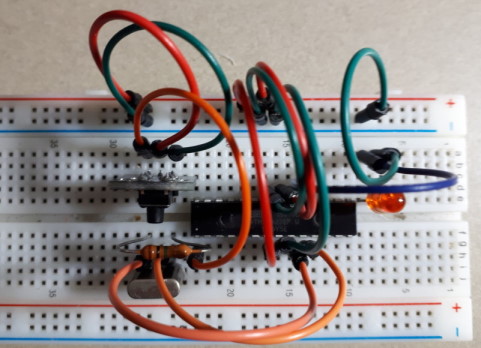Welcome to my project pages. This is where I document some of the projects I have undertaken.The projects are based on the Arduino (UNO, Nano, Pro and Mega2560) and ESP8266/ESP32 In addition, I have included some of the smaller general purpose projects which can be a source for ideas, and some odd tips or tricks or general information.
I use the Arduino IDE for development, although I have installed and used PlatformIO. I use Visual Studio or Visual Studio Code for examining libraries, and Visual Studio for desktop application development..
Hardware is sourced from Wish, Temu, Ali and EBay for cheap and cheerful, and Core Electronics for quality and support. A lot of hardware is recovered from dismantled equipment.
Schematics are created with KiCad. Labels are printed on a generic 3018 CNC with laser adapter using LaserGRBL.
Enclosures are created using using FreeCad and printed on a Creality Ender 3 using Cura Slicer.
A minimal Arduino running Blink: ATMega328, 16mHz crystal, one resistor, a reset switch and a LED to prove that it is running. Note that the two 22pf capacitors usually required for the crystal oscillator are not included: it works better without them, perhaps because the breadboard has enough internal capacitance.

Feedback Provide comments or ask a question about these projects.
